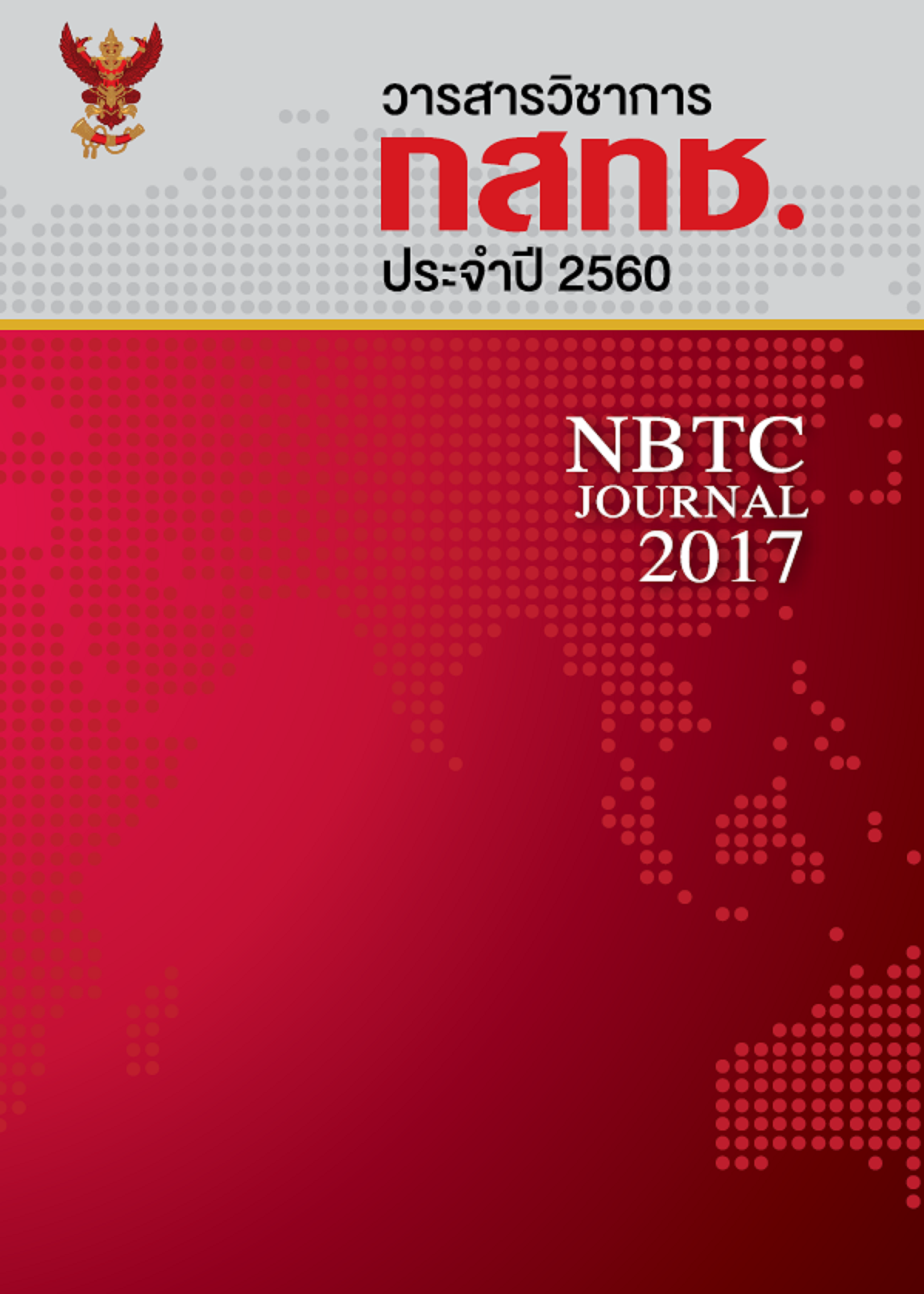โอกาสและความท้าทายในการให้บริการโทรทัศน์เคลื่อนที่
Keywords:
Mobile Television, Mobile TV, Digital Television, Interactive Multimedia ServicesAbstract
The convergence of broadcasting and telecommunications creates a variety of innovative services, especially “interactive multimedia services” that are attractive to the audience and changing user behaviour. Mobile television (MTV) broadcasting services based on broadcast networks have been launched in North American media markets, Japan and Korea. Viewer uptake is low and slow growth. Concurrently, Mobile Television contents are streamed using cellular technologies offered by cellular operators. It has not reached sizable market and is a niche market due to large quantum of data for video and accompanying cost. As a result media market players are cautious of mobile television services as streaming against broadcasting. However, by improving the existing business model for broadcast mobile television, key players can make it not only viable but also profitable by increasing subscriber base leading to increased revenues. The major revenue source of both broadcasters and cellular operators are declining. Mobile voice service is increasingly under pressure, similarly the advertising revenue of broadcasters. By collaborating with broadcasters, services of Mobile operators could differentiate among rest by integrating mobile television with mobile broadband. Regulators, mobile operators and broadcasters need to collaborate then design, implement and operate mobile television broadcasting services.The first Thailand Broadcasting Master Plan mandates strategy for transition from analogue to digital broadcasting to ensure efficient use of radio frequencies. Mobile TV services is still underlying on the digital terrestrial broadcasting technology. This article summarizes MTV technologies, services, international case studies and the potential deployment of mobile TV services in Thailand.
References
Dr. Amal Punchihewa, IEEE-Broadcast Technology Society Distinguished Lecture, MCOT, Bangkok, 26th June 2017.
Experiences of Evolution of digital terrestrial television in India, M.S. Duhan, ABU Technical Review Journal TR263,
pp2-5, 2015
ITU, ITU –R BT.1833-3 (02/2014), Broadcasting of multimedia and data applications for mobile reception by
handheld receivers
ITU and NBTC. (2015). Mobile Television Services: Feasibility study for Thailand. Retrieved from https://
broadcast.nbtc.go.th
ITU and NBTC.(2016). Mobile Television Services: Implementation Strategies and Roadmap. Retrieved from
ITU/NBTC Regional Seminar on “Delivery Technologies and Business Models for Mobile Television and Multimedia
Services” (2015), Bangkok
สำนักกิจการโทรทัศน์ในระบบดิจิตอล.สํานักงาน กสทช. (2557). รายงานการประชุมเรื่องระบบการรับส่งสัญญาณโทรทัศน์เคลื่อนที่
ณ ประเทศเกาหลีใต้ และประเทศญี่ปุ่น.
Downloads
Published
How to Cite
Issue
Section
License
The Office of the NBTC holds the copyright of articles appearing in the journal. The Office of the NBTC allows the public or individuals to distribute, copy, or republish the work under a Creative Commons license (CC), with attribution (BY), No Derivatives (ND) and NonCommercial (NC); unless written permission is received from the Office of the NBTC.
Text, tables, and figures that appear in articles accepted for publication in this journal are personal opinion and responsibility of the author, and not binding on the NBTC and the Office of the NBTC. In case of errors, each author is solely responsible for their own article, and not concerning the NBTC and the NBTC Office in any way.



